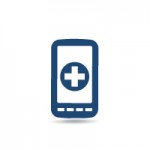Personalized medicine provides a deeper understanding of the molecular processes of life to enable prevention, diagnosis and treatment of diseases. Micro- and nanotechnology solutions are contributing to the development of diagnostics and treatments tailored to address the individual patient’s disease progress and personal needs.
Opportunities for Medtech Manufacturers
Medical devices are becoming ever smaller, less expensive and better connected. Device companies require suppliers to deliver more lightweight yet powerful components, modules and chips, or dedicated energy and data storage systems. As the number of people developing chronic diseases continues to rise, there are more opportunities for medtech manufacturers.
For example, in Germany alone, more than 18 million people are obese, 20–30 million have high blood pressure, and an estimated 8 million will have diabetes by 2030. At the same time, personalization and digital technology are changing our lives and transforming healthcare delivery: As many as 54% of people in Germany think individual treatment methods are very important, and one in five of the country’s population has a healthcare or medical app on their smartphone. The health apps market is projected to grow 10-fold in the period from 2013 to 2017.
Many medtech manufacturers, such as Philips, are particularly interested in commoditization, miniaturization and connected devices. Ultrasound is an example of commoditization: A machine cost about $15,000 in 1995 and was larger than an office cabinet, while the latest model, Philips’ Lumify, for example, is priced at $ 200 per month. For that price, customers get a mobile, app-based ultrasound that gives healthcare providers features like cloud technology and very high image quality. The ultrasound transducer is connected to an ordinary commercial tablet PC or smartphone. Miniaturization is similarly evident: A point-of-care device used in the home replaces an entire hospital lab. And digitization ties everything together: HealthSuite, a powerful cloud-based platform provided by Philips, enables connected, continuous healthcare. The technology collects, compiles and analyzes medical and other health data from a variety of sources. The solution addresses the complexity of healthcare IT and can combine conventional health data from digital patient files, diagnostic and imaging systems, and clinical monitoring with personal data from smartphones, smartwatches and fitness trackers. Collecting diagnostic and treatment data in a large healthcare system gives way to a continuous health monitoring approach offering proactive and preventive benefits.
Rapid Analysis in 30 Minutes
The Austrian Institute of Technology (AIT) in Vienna develops technologies for point-of-care lab diagnostic systems, including highly sensitive biosensors for molecular diagnostic tests on body fluids such as serum, urine and saliva. Diagoras, a project involving AIT and eight European partners, has received €5.5 million in funding to develop a mobile device that helps doctors and dentists evaluate and diagnose infectious diseases in just 30 minutes. The main goal of Diagoras is to develop a point-of-care diagnostic device based on a microbiology platform intended primarily for use in the diagnosis of oral and respiratory infections.
Technology Answers Complex Diagnostic Questions
Although improvements have been made in treatment, cancer continues to be a leading cause of death in Germany. Detecting tumor cells that have dispersed in the body has piqued interest both as a diagnostic tool and as a predictor of prognosis. Research indicates that disseminating cancer cells could play an important role in cancer screening.
The cost of currently available detection systems poses an adoption challenge within clinical settings. High-quality, easy-to-use systems that are capable of continuous, real-time detection of isolated tumor cells and suitable for routine practice are not readily available. To address this problem, the MRCyte project, funded by the BMBF (German Ministry of Education and Research) and with the participation of Siemens, was launched. Its goal is to measure concentrations of rare cells in patient blood by magnetic detection with a hard drive read. This platform technology, called magnetic flow cytometry (MRCyte), is based on magnetically labeled cells and matching sensors. The method is faster and easier to use than the existing technology of optical flow cytometry, especially in the pre-diagnosis stage. “The functions of a living cell would be the ideal biomarker for many clinical decisions,” says Dr. Lukas Richter of Siemens Healthcare. “We want to measure non-stable biomarkers in future and reduce pre-diagnosis to a minimum.” The MRCyte project could help achieve that intention.
Tiny Sapphire Implant Shells
Implants play an important role in individualized medicine. The Centre Suisse d’Electronique et de Microtechnique SA (CSEM) has developed non-metal miniaturized shells for implants. These special packaging systems introduce new opportunities for implantation technology, because they can be used in what were previously inaccessible parts of the body. “The challenge begins with the inhospitable surroundings implants are exposed to, including an environment that is highly corrosive because of the oxidation processes, pH, temperature, ion composition and protein concentrations in our bodies,” said Rony Jose James of CSEM at the COMPAMED Spring Convention. Implants must also be biocompatible and biofunctional, and have a long service life. Various materials used in microelectronics have been considered, but the chosen solution consists of a tiny sapphire shell that measures just 0.6 x 0.6 x 1.0 mm and has enough space for miniature sensors. Its applications include implantable microphones in the middle ear, aneurysm detection, neurostimulation implants, and monitoring vital life functions in the heart.
3-D Printing Biological Tissue
3-D printers are currently being used for mass production in many industrial processes, including for lightweight engineering and aviation. The manufacturing technique also holds great promise in medicine, from dental restoration to knee implants to entire organs. “It opens up the possibility of converting digital data directly into objects,” says Dr. Kirsten Borchers, Fraunhofer Institute for Interfacial Engineering and Biotechnology (IGB). “Fabrication into individualized forms is very much to be desired in medicine, and plenty of 3D data is already available as a result of high-tech imaging methods.” IGB developed bioinks for bioprinting, which are made from gelatine and used to construct chemically crosslinked hydrogels. Gelatine is derived from collagen and closely resembles the natural extracellular matrix. By varying the degree of crosslinking, IGB researchers can produce a matrix of a strength that is compatible with natural tissues such as fat or cartilage. “We modify biomolecules from the extracellular matrix of tissue in a way that enables us to control its gelling behavior, viscosity and crosslinkability, thus rendering it suitable for use in the bioprinting process,” says Dr. Borchers.
The COMPAMED trade fair (November 14 – 17, 2016 in Düsseldorf, Germany) will present the latest trends and developments for personalized medicine. The event is expecting about 800 exhibitors from more than 40 nations, filling the Düsseldorf fairground halls 8a and 8b to capacity. Over 18,800 visitors participated in COMPAMED last year, the highest attendance ever. The trade fair will be held concurrently with MEDICA – World Forum for Medicine and together, both events attracted 130,000 trade visitors from 120 nations in 2015. This globally unique combination – the world’s largest medical trade fair, MEDICA (approximately 5,000 exhibitors) and COMPAMED – present the entire process chain and show the full range of medical devices, systems and instruments now available. Combined, both trade shows occupy all 19 halls of the Düsseldorf fairgrounds complex.






